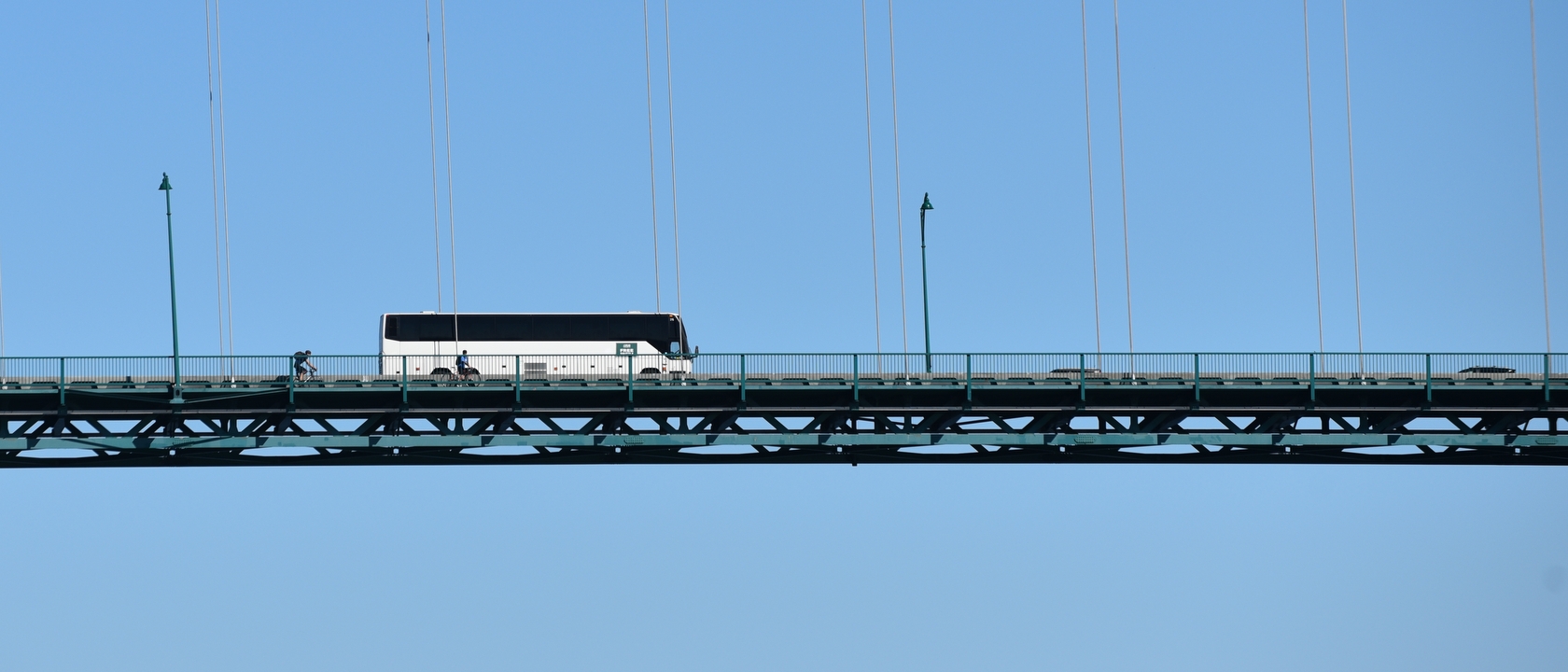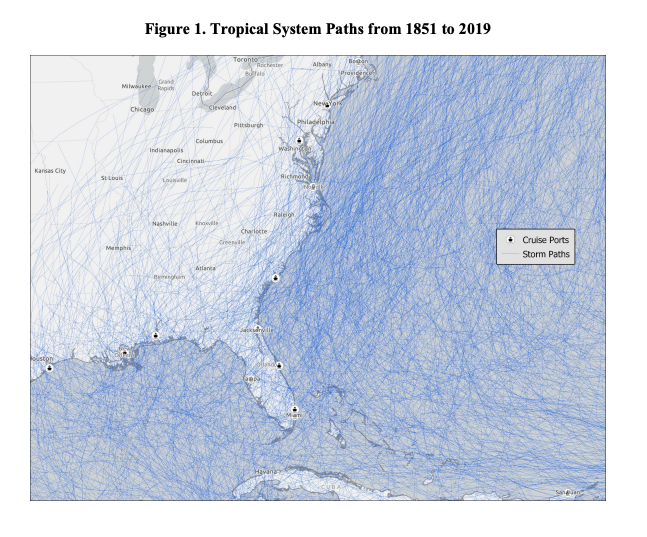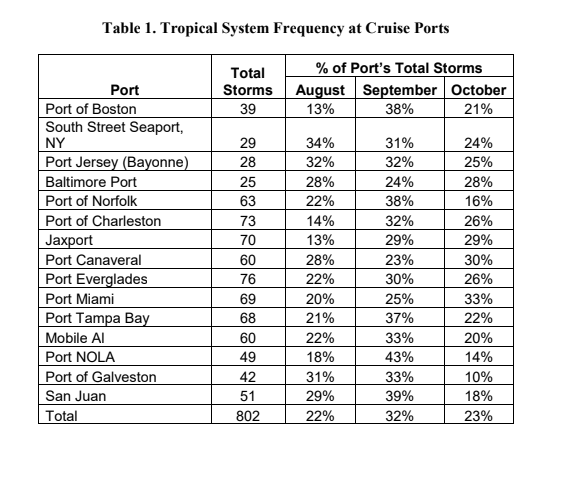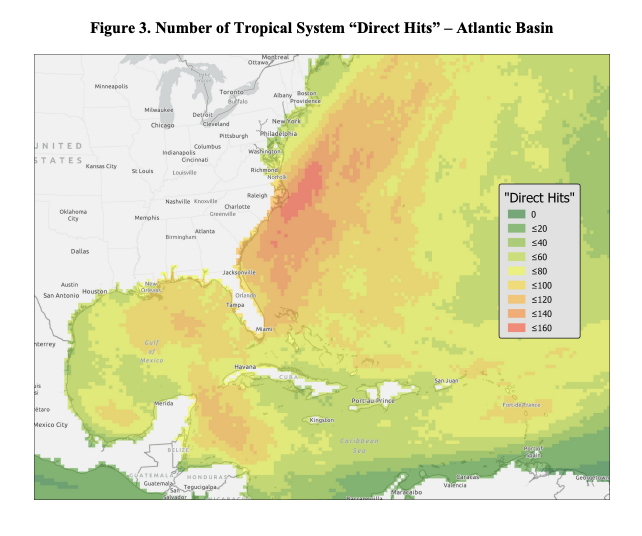SLOW TRAVEL

Cruising during hurricane season, the topic has been covered before, right here as a matter of fact. So why revisit this topic? Most cruise lines have their own meteorologists on staff to keep ships out of harm’s way. True, but they are on the cruise line’s payroll. Today, we have detailed information about cruising during hurricane season from professionals not employed by cruise lines.
Why This Information Is Unique
Ted Palma is a certified consulting meteorologist with over 40 years experience working in consulting and the federal government who received his Masters in Meteorology from the Pennsylvania State University. Ted is an avid cruiser who we met on a cruise more than a dozen years ago. Mark A. Morris is an environmental engineer and geographic information system (GIS) analyst with 30 years of experience.
Here is the informative advice Ted & Mark have on the topic:
Are you considering booking a cruise during hurricane season? For the Atlantic Basin (the Atlantic Ocean, the Caribbean Sea, and the Gulf of Mexico) hurricane season runs from June through November. While a storm can occur at any time during this season, the peak season is from mid-August to late October. Cruise lines generally offer some of the best deals of the year during this time period, especially after Labor Day. Obviously, along with these cost savings is the risk that your cruise may be impacted by a tropical system.
While there is no guarantee that Mother Nature will cooperate with your cruise plans, in a recent study we looked back at the paths of historical tropical systems to determine which embarkation ports, itineraries, as well as which months will give you the best odds of a smooth sailing.
By analyzing the storm paths of nearly 2200 tropical systems (Figure 1) over the past 169 years, we estimated which embarkation cruise ports and which itineraries could minimize your chances of being impacted by a storm. It’s important to keep in mind that once at sea, cruise lines will generally do their best to steer clear of potential trouble spots. This may in some situations result in missing a port or adjustments to your itinerary.

While each storm’s strength and size will vary, for our study we assumed a “direct hit” as being within 50 miles from the center of a storm. While impacts such as high seas, wind and tropical squalls can be felt much farther than this distance, we estimated that if a storm were within 50 miles, essential services required for embarkation would be compromised, potentially resulting in a delay and or cancelation of the cruise.

Table 1 and Figure 2 present a compilation of the number of storms with a “direct hit” for each embarkation port. Table 1 also shows the breakdown of storms during the peak months (August through October) of the tropical season.

Aside from the cruise ports, Figure 2 also shows direct hits at 19-mile (30-kilometer) grid cells that cover the Atlantic basin, with color coding used to represent the number of storms within 50 miles of each cell. Figure 3 depicts a broader view of the Atlantic basin broken down into the grid cells.

A close examination of Table 1 and Figure 2 suggest that sailing out of the Western Gulf ports (Galveston and New Orleans) during hurricane season will reduce your chances of a “direct hit” from a tropical system. In addition, a cruise from San Juan will also reduce your odds of a direct hit. If a Gulf or Puerto Rico port is not an option, Port Canaveral offers the best odds to miss a storm from a southeast port. Cruising from mid-atlantic and northeast ports will significantly reduce your odds as well.
When we examine Figure 3, other than a New England or Canadian Maritime cruise, it appears that a southern Caribbean itinerary (Lesser and Leeward Antilles) has the lowest odds of you missing a port of call due to a tropical system. A western itinerary also has a slightly lower risk than an Eastern itinerary. The highest risk of a tropical system’s direct impact is along the northern Leeward Islands, the northern half of the Greater Antilles and the Bahamas.
Further, if you have flexibility in the timing of your cruise, as shown in Table 1, try to avoid September which has the greatest frequency of storms in most port locations. Nearly one third of all direct hits from tropical systems on cruise ports occurs in September alone. Western Gulf ports as well as San Juan appear to have a lower risk in October.
Finally, it’s important to put the above data in context. While the data and maps presented above may look ominous, the overall probability of any given storm directly impacting your cruise is very low, just 2 or 3%. Even during peak season when 3 or 4 storms may be brewing at the same time, odds from a direct hit are less than 10%. So, with a bit of planning, and odds in your favor, it is possible to take a fabulous cruise during hurricane season.
Graphics Credit: Mark Morris